You could say that Milwaukee’s French Immersion School, located in the former Steuben Junior High School, 2360 N. 52nd St., has taken a grand tour – of Milwaukee school buildings, at least – over the course of its 35-year history.
“The Milwaukee French Immersion program began in 1978 as part of court-ordered desegregation,” says recently retired principal Virginia McFadden.
“Anthony Gradisnik, curriculum specialist for foreign languages at that time, had the foresight to research and to develop the immersion schools in Milwaukee as an alternative to forced busing,” says McFadden. “The French and German programs were housed at 68th Street School and then moved to 82nd Street School.”
After some time at Lancaster School (only part of the program shifted to this school on 68th near Fond du Lac Avenue for a year due to space constraints at 82nd Street), the program moved to 88th Street School, near Morgan Avenue on the southwest side, before landing at its current location in 2004.
“The immersion schools proved to be very successful,” says McFadden. “The French program continued to grow and thrive, eventually filling the 88th Street School site to capacity. Due to the desire to expand the program as well as for budgetary reasons, the program was again relocated.”
That movement brought growing pains, but was also a sign of a successful and in-demand program.
“Relocating the school in and of itself had its challenges,” McFadden recalls. “There were a number of people who were very opposed to the idea for a variety of reasons. Initially, the program ‘lost’ some families because of the move, but within a year the student population grew to surpass the population prior to the move.
“Although it was a very challenging time, the relocation allowed the program to continue to grow and to remain a vibrant part of MPS.”
Enrollment stood at 338 when MFIS opened its doors in its current location. This September, it enrolled 448 students in grades K4-5.
MPS also offers immersion programs in German and Spanish – as well as immersion in numerous languages at the middle school and high school levels at Milwaukee School of Languages – and partial immersion programs in Italian (at Victory School), Mandarin (at Milwaukee Academy of Chinese Language) and Spanish (at Morgandale School). The district also offers a range of bilingual and two-way bilingual Spanish programs.
These days, Milwaukee French Immersion School is a popular place for students and for teachers. McFadden told me in 2011 that very few teachers leave the program for reasons other than retirement or to stay home with a new baby.
“The unique language element of our program is definitely our biggest draw,” says former teacher Gina Bianchi, who was appointed assistant principal in charge upon McFadden’s retirement. “With over 220,000,000 people around the world speaking French as their first or second language, it is truly a global language. Being able to speak French opens career opportunities over the world. Families are drawn to the successful, research-based method of immersion as a natural way for students to acquire French.”
In addition, Bianchi says students in the program outperform not only district but also state averages in reading proficiency, which demonstrates that students excel in English, as well as French, at the school.
“Another draw is that our central location allows for students to come from all over the city of Milwaukee,” adds Bianchi. “Parents often cite the fact that we have such a diverse population as one of the reasons they chose our school. Our student body is representative of a variety of different walks of life, socioeconomic statuses, races and cultural backgrounds.”
When I visited McFadden at MFIS in early 2011, the school was ranked an eight out of 10 by Great Schools (though certainly a single number cannot capture something as complex as a school). These days it’s rated a seven and that dip is perhaps a function of the funding hit the program took during the 2011-12 school year when the state cut SAGE funding, which had helped to keep class sizes small. The result was the loss of teachers and a near-doubling of the number of students in some classrooms.
“The loss of SAGE was a challenge for the school,” McFadden says. “Class sizes in kindergarten through third grade increased from a maximum of 18:1 to as high as 35:1. This increase in class size made it much more difficult for teachers to provide differentiated instruction to meet the needs of the students in their classes.”
McFadden, though, reorganized her resources, reassigning classroom paraprofessionals to focus on the youngest learners in the largest classes and drew in parent and community support to draw volunteers to help with student and staff support.
Now, Bianchi says things are back on track.
“There are a lot of exciting things happening right now this 2013-14 school year,” says Bianchi, who was mentored by McFadden in recent years. “I am proud to say that our class sizes have reduced from the larger numbers we saw a few years ago. We have been able to add highly qualified paraprofessional assistants, some of whom are native speakers and one of whom is a certified teacher.”
Bianchi says the school has a good student-to-fluent-speaker ratio, which helps boost student proficiency in French in all subjects. The school also offers a unique two-week exchange program for fifth graders at MFIS and at partner school Salon de Provence.
This year, MFIS has also added after-school sports, African dance lessons in French with a native speaker from Senegal, brought back art classes, is working with the Wisconsin Conservatory of Music to bring music instruction and created a parent resource room.
Parent and community support is another area in which MFIS has excelled. Along with German Immersion, it is one of just a handful of MPS schools that has an organized foundation to assist with fundraising.
“A group of very innovative and determined parents worked diligently to establish the Milwaukee French Immersion Foundation in order to support the K-12 French Immersion program in Milwaukee (at MFIS and Milwaukee School of Languages),” says McFadden
The foundation has helped set up language models from Francophone countries at MFIS and MSL, adds Bianchi.
“These individuals help bring the French ‘alive,’ working with small groups, providing a vital cultural element to our program and offering academic support to our students in the target language,” Bianchi says. “We also have partnerships with several universities whose fluent French-speaking students earn credit to support instruction in the classroom.”
These days, MFIS staffers are working with the district to find French-language materials that align with the Common Core standards that Wisconsin and 44 other states have agreed to follow.
“The district has been actively engaged in finding ways to help strengthen the immersion programs that do exist,” Bianchi says. “The district is providing professional development tailored to the unique needs of our program. Most recently, the district connected us with a fluent French speaking mathematician to help us explore how we are meeting the new shifts in mathematics with the implementation of the Common Core State Standards. The district is also helping us explore options of a new French reading series.”
On Friday, Jan. 24, MFIS hosts an 35th anniversary celebration from 5:30 to 8 p.m. that includes an open house for the community. Bianchi says there will be door prizes, self-guided tours, live kindergarten and first grade demonstration classes, musical performances, cake and more.
She hopes former and current staff, alumni, current students, families and staff will join the celebration.
“It’s also a perfect opportunity for the broader community to come and see what immersion is all about,” Bianchi says. “Many members of the general public do not know that MFIS is a free, city-wide public school.”
And where will MFIS be located in the future? Without a crystal ball, who could say, but Bianchi doesn’t sound like she’s planning on moving anytime soon.
“Our current location has allowed and continues to allow us to serve more students,” she says.
Qu’est qu’on est bien chez soi! Home sweet home.

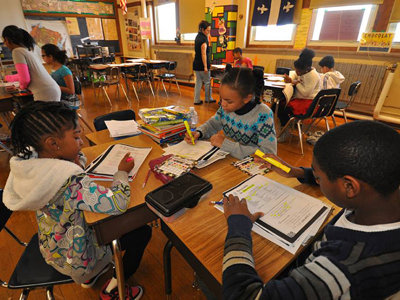
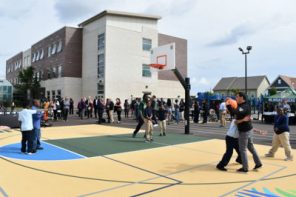 i evaluate to yes even if there's no image
i evaluate to yes even if there's no image  i evaluate to yes even if there's no image
i evaluate to yes even if there's no image  i evaluate to yes even if there's no image
i evaluate to yes even if there's no image 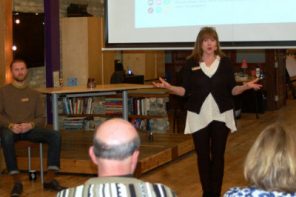 i evaluate to yes even if there's no image
i evaluate to yes even if there's no image 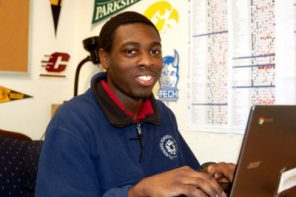 i evaluate to yes even if there's no image
i evaluate to yes even if there's no image 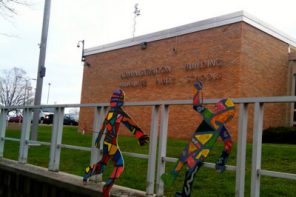 i evaluate to yes even if there's no image
i evaluate to yes even if there's no image